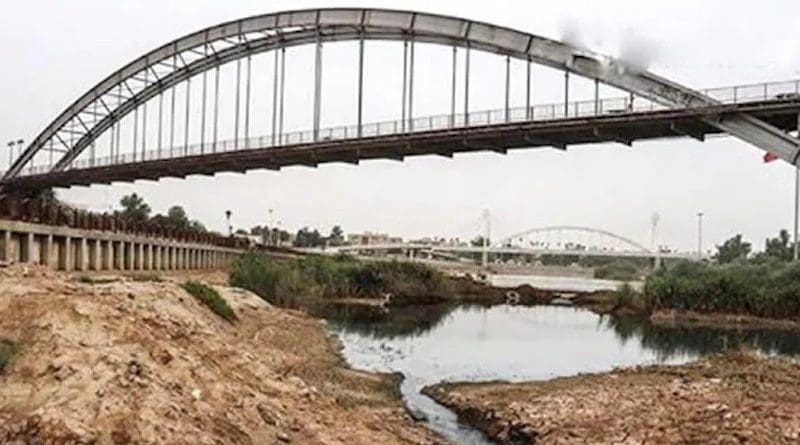Iran: Why Are Rivers In Khuzestan Province Dried Out?
Iran’s Khuzestan province is well-known for its abundance of bodies of water. A third of Iran’s running waters flow into Khuzestan. The province is irrigated by the Karoun, Karkheh, Jarahi, and Maroun rivers. Despite the abundance in bodies of water, Khuzestan has now changed into a dry province, where livestock are dying from lack of drinking water, palm trees are withering away, and the locals are left in thirst in the scorching summer heat.
Khuzestan is possibly one of the hottest places on earth with maximum temperature in summer soaring up to 55°C/131°F.
Once a water-rich province, Khuzestan is now facing a serious water crisis, where mere drinking water is a challenge.
Mismanagement of regime officials, in addition to drought
According to a report published on July 16 by the state-run Tejarat News website, the unprecedented drought in Khuzestan has caused officials to consider importing water.
“There is no need to import water. We just need the correct management and the appointment of the right experts to manage the country,” Mohammad Darvish, an expert on water and environmental affairs, told Tejarat News.
“Our problem is not a water crisis, it’s the lack of rationality,” he said. The environment expert added that importing water would not solve the water crisis.
Darvish said Iranians only need 8% of the country’s water supply for drinking.
“Even though rainfall has decreased by 40% this year, we could have easily supplied drinking water for the country. If there is a drinking water problem, it is a result of mismanagement, and cannot be solved by imports,” Darvish said.
A report by the state-run ISNA News Agency said on June 15 that in the past year river waters and reservoirs have been drying up. According to the report, dams cannot supply different areas they were supposed to, causing the water crisis. Khuzestan is now facing a drought and water crisis since the water reservoirs are drying out.
On July 16, the state-run Mehr News Agency wrote that Mohsen Heidari, Khuzestan’s representative in Iran’s Assembly of Experts said the mismanagement of water resources as well as uncontrolled dam construction played a major role in the drying up of the Karkheh River. The Karkheh Dam was built in 2001 by the Islamic Revolutionary Guards Corps (IRGC).
“We warned five years ago that a catastrophe would occur in Khuzestan. They agreed but continued to build the dams. Authorities should release the waters from the Karkheh dam,” the representative said.
Water diversion
A Khuzestan MP said on July 16 in parliament that water diversion projects from the Karoun river springs should be stopped, according to the state-run IRNA News Agency. He added that drought is one problem, but the water diversion has caused the crisis. The MP, Abdollah Izadpanah, also said most areas in Khuzestan have drinking water shortages. In late March, locals protested to the Karoun river diversion project.
Iranians blame the regimes’ policies for the severe water shortage. They believe the regime’s elites and the unelected Supreme Leader have deprived them of their basic living rights, including the recent water shortage.
Construction of dams
The state-run Resalat Daily wrote on July 17 that a total of 170 dams were constructed on the basins of the Karkheh, Karoun, Maroun, and Jarahi rivers. 70 of the dams were constructed on Karoun.
This is while experts say none of the dams should have been constructed. Many ask why all these dams are needed and where are the waters diverted to. Isfahan’s Zayanderud River has also been dried out, and in the past days, the waters were released to silence protesting farmers.

